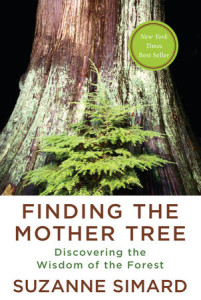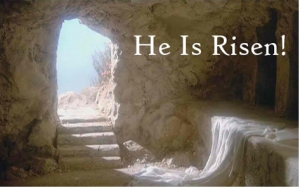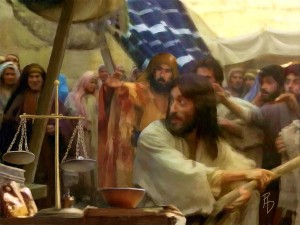“Nothing lives on our planet without death and decay. From this springs new life, and from this birth will come new death. This spiral of living taught me to become a sower of seeds… a planter of seedlings, a keeper of saplings, a part of the cycle. The forest itself is part of much larger cycles, the building of soil and migration of species and circulation of oceans. The source of clear air and pure water and good food. There is a necessary wisdom in the give-and-take of nature—its quiet agreements and search for balance. There is an extraordinary generosity.”
– Suzanne Simard, Finding the Mother Tree
Beloved of God,
As autumn moves to center stage (welcome and thank you, blessed RAIN!), its emblems of change playing out around us, I’ve been enjoying walks in Lincoln Park. Both our kids have practices of one sort or another at LP multiple times each week, which gives me the chance to revisit trails both old and new. The God’s Work—Our Hands project last month, powered by a dozen people from Peace, provided an opportunity to experience the park in a different way—to contribute to forest health by removing invasive species from “tree islands” near the park’s northeast perimeter.
Lisa McGinty, a Forest Steward with Green Seattle Partnership (GSP) who coordinates volunteers with Friends of Lincoln Park (FLiP) was our coach and guide on that beautiful fall day. By profession an art director and graphic designer, Lisa came to Seattle 12 years ago harboring a deep love and appreciation for the forest environment. While on a run in Lincoln Park one day she saw a group of volunteers at work tending to the forest and was immediately drawn in—“That’s what I want to do.” After completing a ten-week Master Forester training program with GSP, Lisa began organizing and leading groups of volunteers on projects in the 135-acre park. When our mixed-generation crew from Peace arrived on September 19th, it was clear from the get-go that Lisa loves sharing what she’s learned through her training and hands on experience. Through word and example she gave us the tools we needed to succeed at our tasks.
Though to the casual observer it might be easy to miss, the work of volunteers over the past two decades has been essential and deeply valuable in supporting the overall health of Lincoln Park’s 80 forested acres. In 1999 an American Forests study sounded the alarm that every forest in Seattle’s park system was threatened. The study estimated that within 20 years, 70% of Seattle’s forested parklands would be ecological “dead zones” where invasive plants predominate, trees are dead or dying, and native wildlife habitat is gone. That alarm drew the attention of many, including horticulturist Ann Lennartz, who provided funding through her Starflower Foundation for establishing methodologies, surveys, mapping and plant inventories that became the basis of the Green Seattle Partnership. The Foundation also provided grants that supported many early forest restoration efforts. A long-term view of the importance of nurturing a healthy forest took root as new partners joined hands to create the GSP in 2004. Its goal: to restore 2,500 acres of park forest land by the year 2025. Data collected in 2017 showed that under the GSP, 170 trained Forest Stewards oversaw 78,666 hours of volunteer time. They removed 8,697 ivy rings, installed 164,177 plants (of which 38,194 are trees), and over the course of the partnership, passed the one million mark in volunteer hours, which equates to $24,501,670 in volunteer leverage! Now that is effective!
Working in Lincoln Park and following news about the growing prevalence and intensity of wildland fires has me thinking about the scale of the challenges facing forests these days and the scale of the challenges we humans face, too, as we endure twin threats of climate breakdown and a pandemic that doesn’t show signs of slowing down anytime soon.
One of my best reads over the summer was Suzanne Simard’s 2021 book on forest ecology—FINDING THE MOTHER TREE: Discovering the Wisdom of the Forest. This remarkable book—part memoir, part natural history, part primer on the scientific method—made me aware of how much forests can teach us about meeting ecological and social challenges while deepening our sense of community. A pioneer on the frontier of plant communication and intelligence, Simard’s investigations of what makes natural forests tick has revealed startling secrets. In her words:
“I discovered that trees are in a web of interdependence, linked by a system of underground channels, where they perceive and connect and relate with an ancient intricacy and wisdom that can no longer be denied. I uncovered the lessons of tree-to-tree communication, of the relationships that create a forest society…. These discoveries are challenging many of the management practices that threaten the survival of our forests, especially as nature struggles to adapt to a warming world… In this search for the truth, the trees have shown me their perceptiveness and responsiveness, connections and conversations. What started as [my familial] legacy… has grown into a fuller understanding of the intelligence of the forest and, further, an exploration of how we can regain our respect for this wisdom and heal our relationship with nature.”
Simard’s scientific work documents the “cryptic underground fugal network” which links trees throughout the entire forest floor, connecting neighbors of all species, young and old alike. This network, a “jungle of threads and synapses and nodes,” bears a striking similarity to our human brain’s own neural network. Her discoveries have ruffled feathers by challenging century-old forest management practices. Her work is providing a new lens for understanding how trees have evolved to nurture coming generations, to care for infirm kin, to protect and heal themselves, and, finally, to offer all they have acquired over their considerable lifespans through extraordinary acts of generosity at life’s end.
St. Paul’s image of the church as interdependent, organically connected “members of the same body”[1] is marvelously mirrored by the natural world of the forest. St. Francis, too, whose life and witness we celebrate this month, was profoundly affected by the resonance he perceived between the spiritual realm and natural world. Thomas of Celano, a contemporary of St. Francis and his first biographer, wrote of the saint: “He forbade the brothers from cutting down a whole tree when they needed wood, so that the tree might have hope of sprouting again.”
Indigenous communities have long been aware of this mirroring, which is powerfully evoked in ceremonies that bind spiritual and physical elements into a sacred whole. And this insight resides at the very core of our own Lutheran sacramental lens for viewing the world and God’s gracious activity in, with, and under it. It must be revived in our current practice! Surely the great Mother Trees of the forests bow their heads in recognition of the Christ who, following Creator’s design, humbled himself rather than exploit his position for personal gain, pouring out his life in an extraordinary act of generosity so that life in all its fecund abundance would become available for others.
As we, the People of Peace, seek for ways to remain connected as a faith community during a pandemic that mandates keeping our distance, I wonder: What might these ancient forest communities teach us about resilience, about sharing energy where it is most needed, about passing wisdom to the next generation, about keeping our lives and mission well rooted within an ever-changing and challenging landscape?
With you on the Way,
Pastor Erik
[1] 1 Corinthians 12








